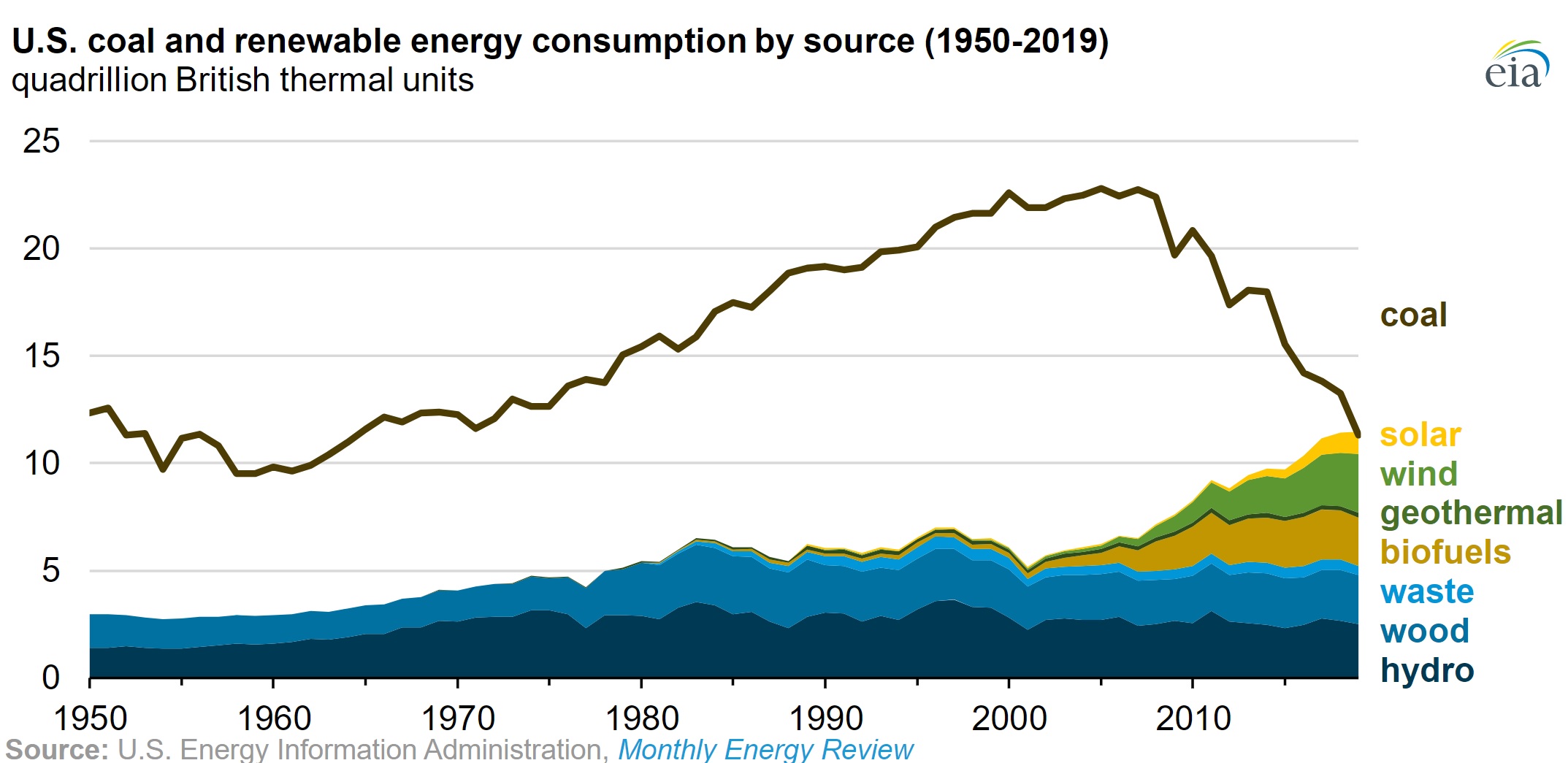Renewables Toppled Coal in US Energy Consumption Last Year, EIA Says
The U.S. got more energy from renewables in 2019 than it did from coal, a year sooner than that same milestone is expected for the electricity sector on its own, according to the Energy Information Administration.
Last year the U.S. consumed 11.3 quadrillion British thermal units of coal, the lowest level since 1964. By comparison, total consumption of renewable energy hit a record-high 11.5 quads, the EIA said Thursday, as the country’s base of wind and solar farms continued to expand.
Prior to 2019, the last year that the country got more total energy from renewables than coal was 1885, back when wood was the main renewable resource on offer.

Earlier this month, the EIA put out figures projecting that renewables will topple coal in the U.S. electricity mix for the whole of 2020, another major milestone. That already happened every day during April.
While most renewable energy is used for power in the U.S., significant amounts are consumed in other areas, including biofuels for transportation.
Consumption of coal, also mostly used for power generation in the U.S., has fallen dramatically over the past decade. Many coal miners and operators of coal-fired plants were already in deep financial trouble, and the coronavirus shock has further weakened their prospects.
Total U.S. power generation is expected to fall by 5 percent in 2020 due to the virus outbreak, and the picture is much bleaker for coal, the EIA says. Coal-fired generation will tumble by 25 percent this year, against an 11 percent increase in total renewable output.
Many American utilities, even those still in possession of significant fleets of coal-fired plants, are staking out plans to transition rapidly toward renewables over the coming decade. This week American Electric Power — whose generating fleet is nearly half coal-fueled — announced it will proceed with a 1.5-gigawatt wind energy investment in Oklahoma. Wisconsin’s Alliant Energy said it would close a coal unit early and acquire nearly 700 megawatts of large-scale solar projects in a state with few built to date.
Meanwhile, Southern Company, which owns a large fleet of gas and coal plants across the Southeast, committed this week to achieving net-zero carbon by 2050, joining other major utilities like Duke Energy and Xcel Energy in doing so.
Renewable energy’s march up the charts is happening despite the stagnant market for what was long the country’s principal renewable resource: flowing water. Wind overtook hydropower as the largest source of U.S. renewable electricity in 2019.

Biomass was America’s chief source of energy until the mid-nineteenth century, back when most energy came from burning wood. But by the late 1800s, coal reigned supreme, and it retained its dominion even after hydropower began to boom in the early twentieth century.
With only one nuclear plant currently in construction in the U.S., the race for new capacity today boils down to renewables versus natural gas, which is now the country’s largest source of power generation.
Renewable energy has a long way to go to catch up with natural gas, which is cleaner-burning than coal and cost-competitive with renewables in most places. But even the EIA, known for underestimating wind and solar, now concedes that renewables will overtake natural gas in the power mix over the next few decades.


